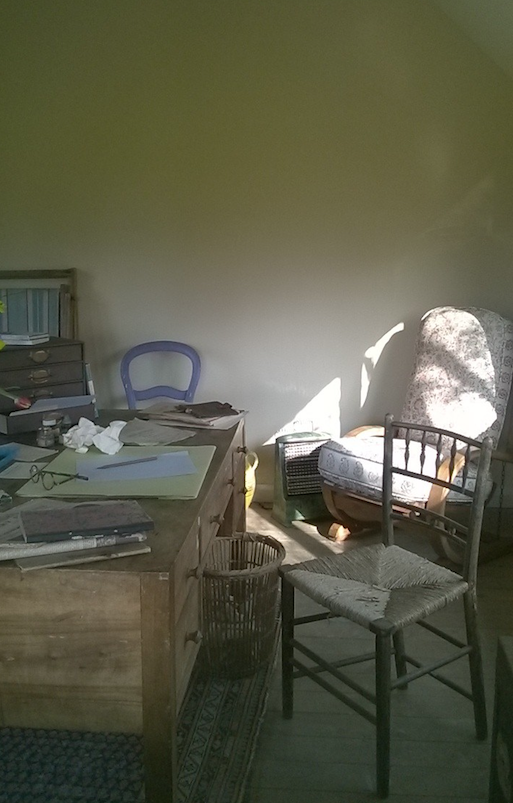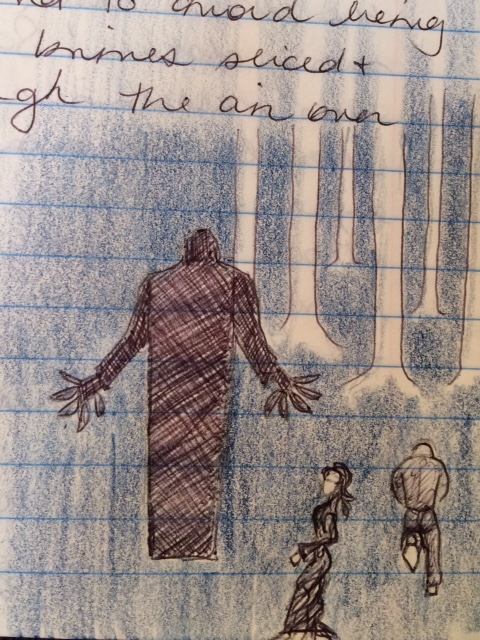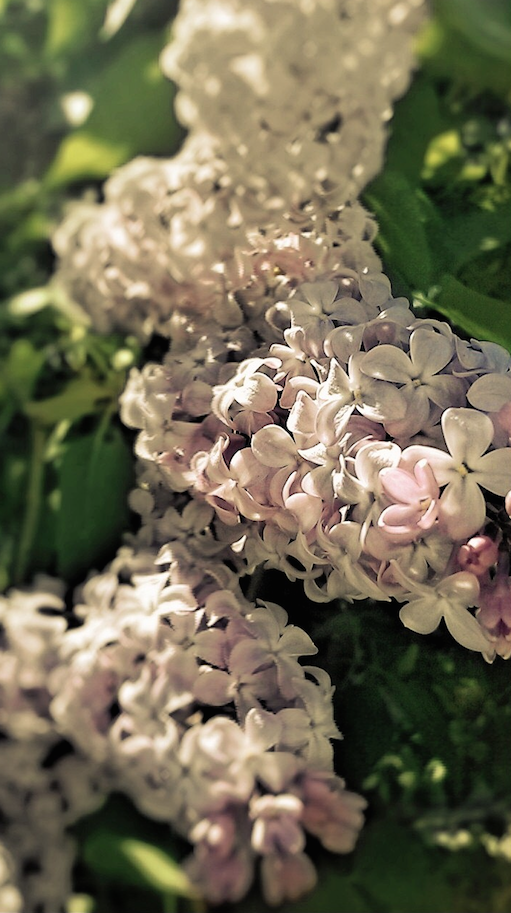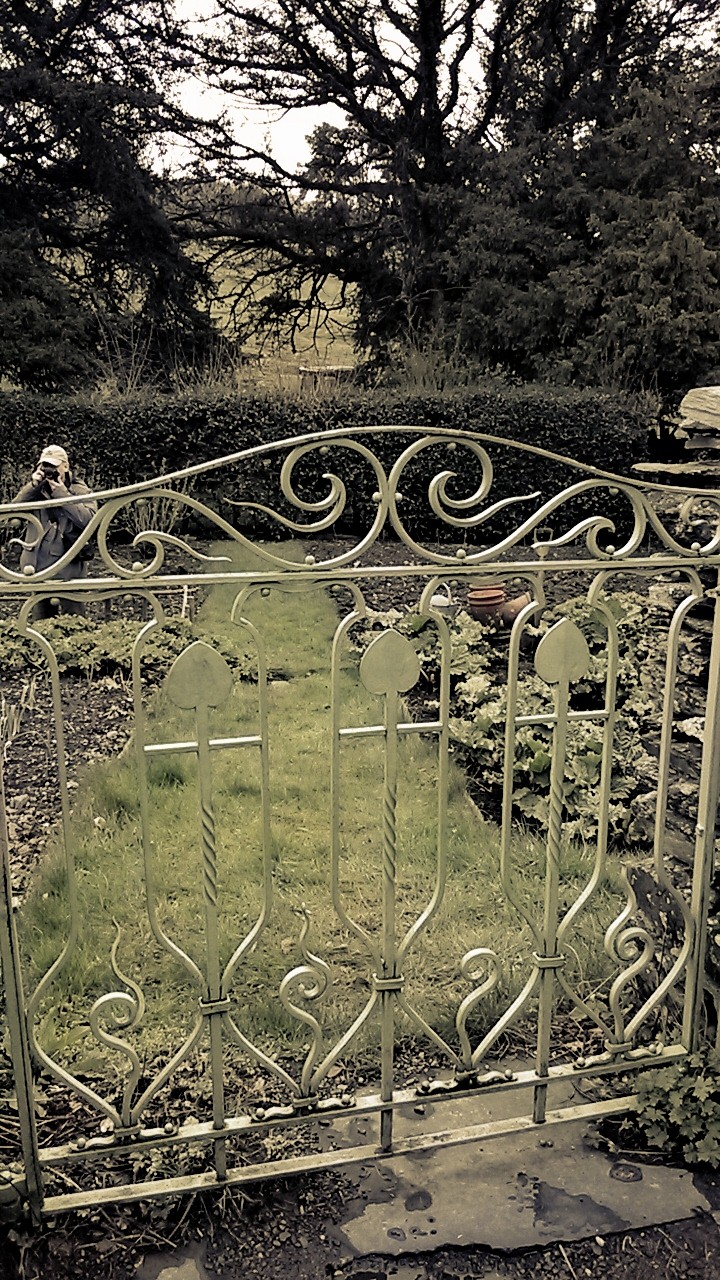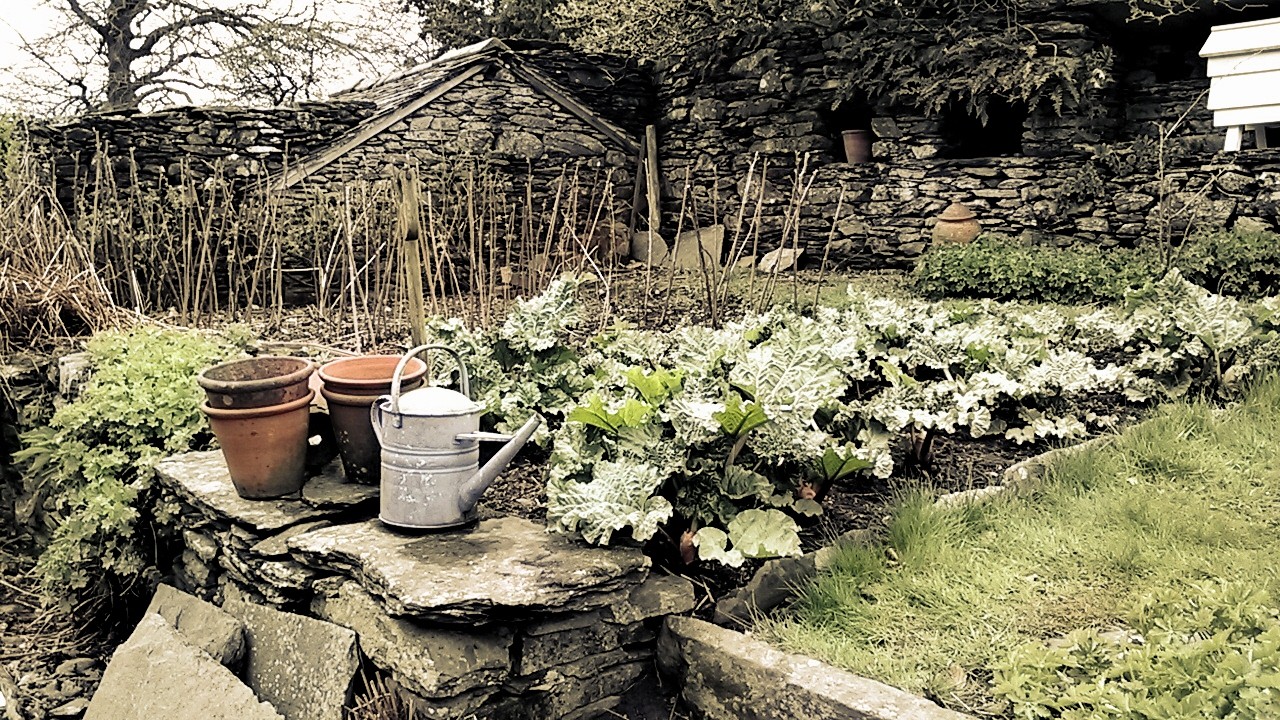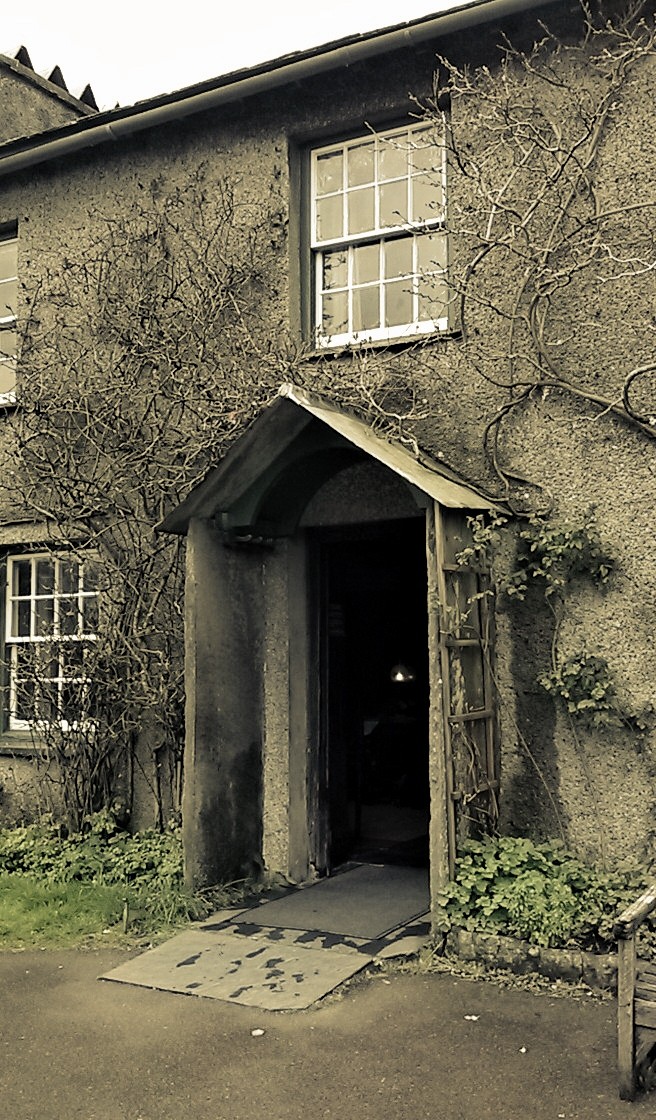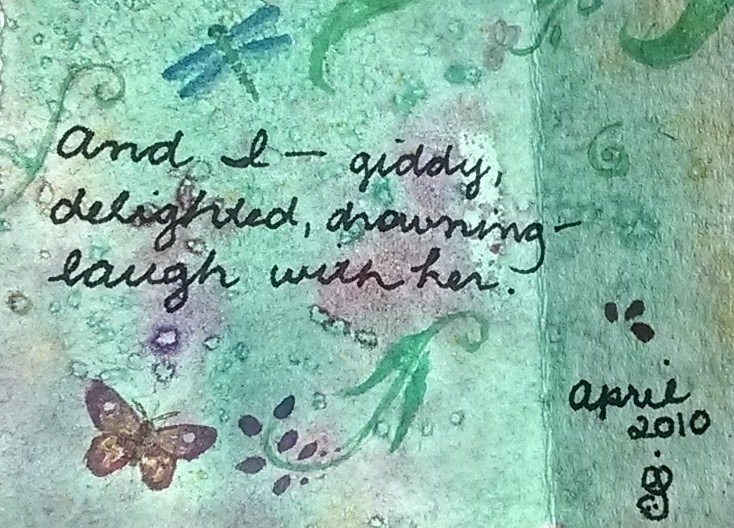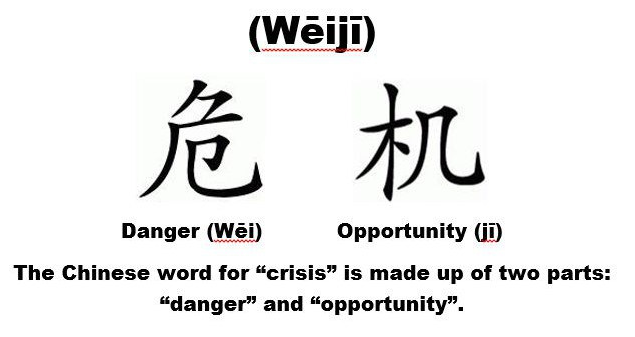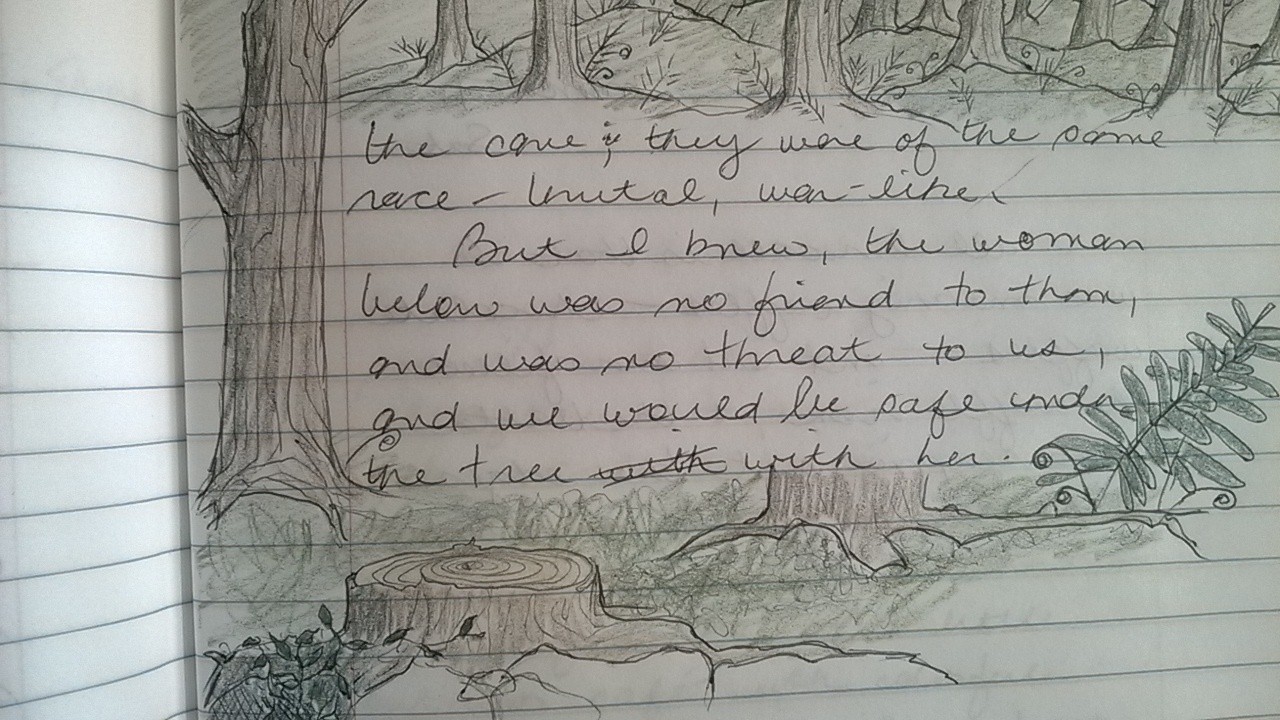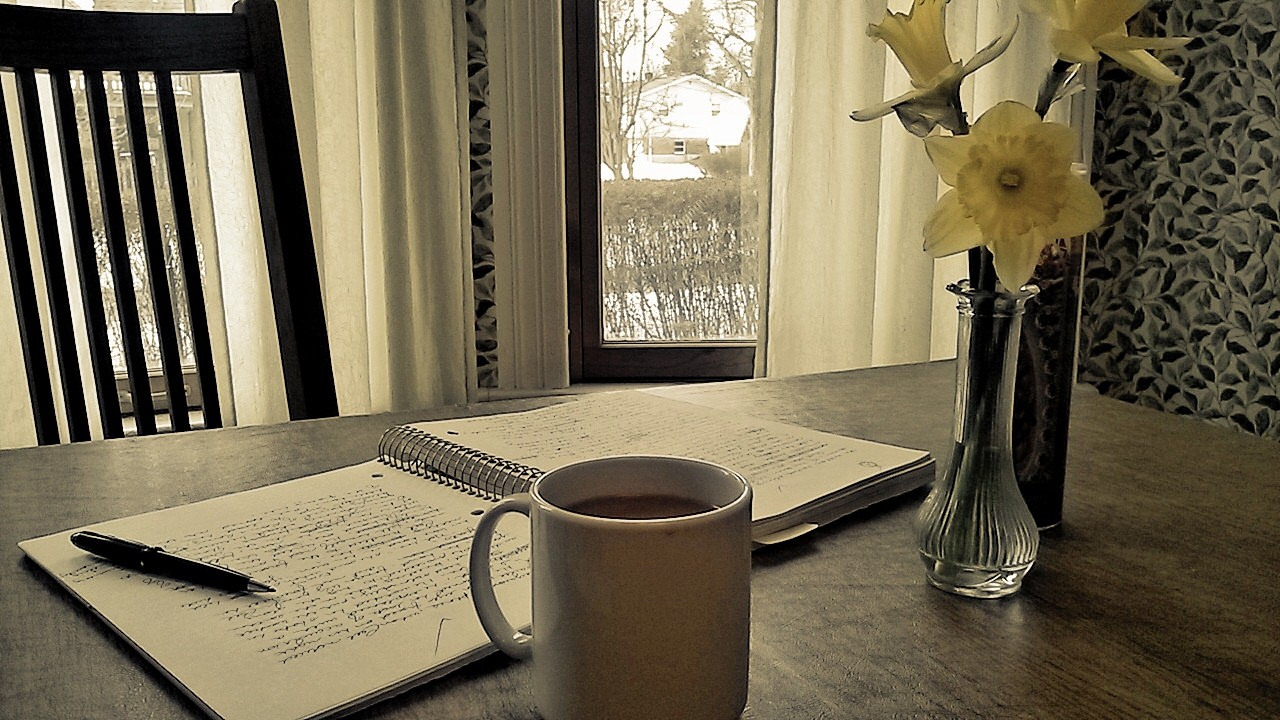We had tarried too long at Sissinghurst. How could we not have? Anyone would lose track of time wandering the grounds of  the once-home of Vita Sackville-West and Sir Harold Nicolson. And my husband and I had done so. Our quick visit had become hours long. But we must be forgiven. Drifts of sunny daffodils swayed in the unmown lawns. Shy bluebells and checkered fritillaria crowded against worn brick walls. Formal gardens invited a stroll, then a pause, then a continued, sustained linger. And we had so lingered. Including at that moment — after climbing the worn stone, spiraling steps of the Elizabethan Tower — when we had emerged once more into open air high above.
the once-home of Vita Sackville-West and Sir Harold Nicolson. And my husband and I had done so. Our quick visit had become hours long. But we must be forgiven. Drifts of sunny daffodils swayed in the unmown lawns. Shy bluebells and checkered fritillaria crowded against worn brick walls. Formal gardens invited a stroll, then a pause, then a continued, sustained linger. And we had so lingered. Including at that moment — after climbing the worn stone, spiraling steps of the Elizabethan Tower — when we had emerged once more into open air high above. 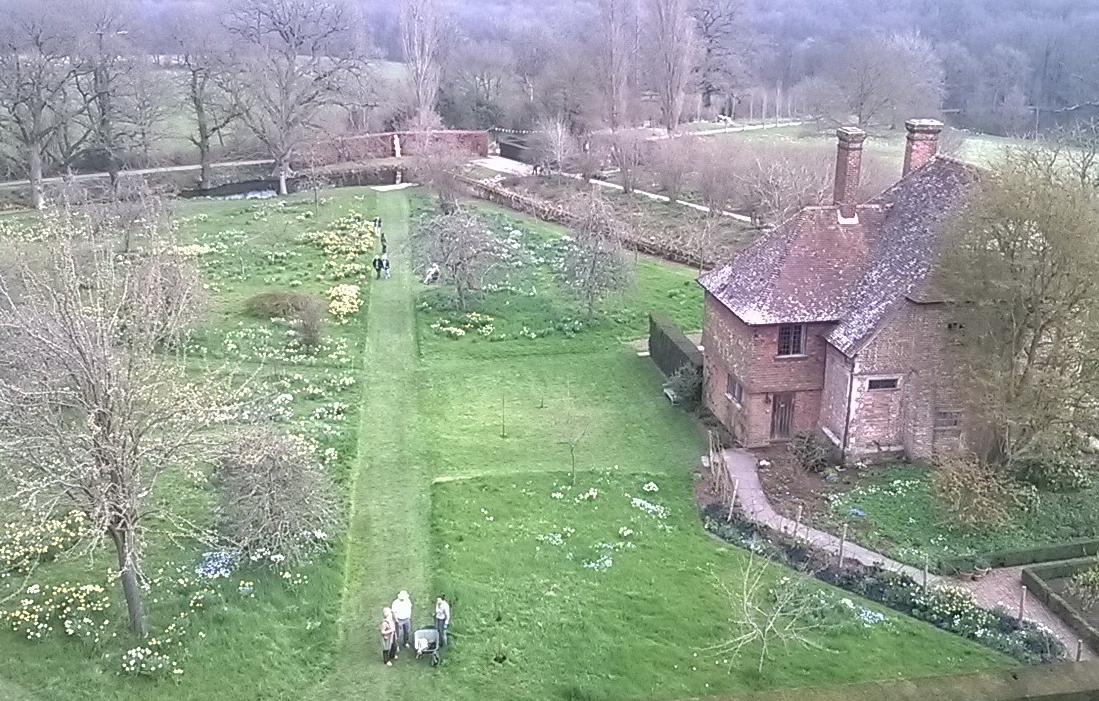 The grounds were laid out below us from this greater vantage point in an organized loveliness. It was windy, the gusts pulled at my hair; and the air was filled with vaguely unfamiliar birdsong. Truly, we enjoyed the beauty and architecture of the Castle and gardens. But I must admit, I would not have known of Vita’s home if it had not been for my deep appreciation of Virginia Woolf’s writing. For Virginia’s novel Orlando, one of my favorite books, was inspired by Vita and Harold’s Sissinghurst Castle, and this, in turn, had inspired my desire to visit.
The grounds were laid out below us from this greater vantage point in an organized loveliness. It was windy, the gusts pulled at my hair; and the air was filled with vaguely unfamiliar birdsong. Truly, we enjoyed the beauty and architecture of the Castle and gardens. But I must admit, I would not have known of Vita’s home if it had not been for my deep appreciation of Virginia Woolf’s writing. For Virginia’s novel Orlando, one of my favorite books, was inspired by Vita and Harold’s Sissinghurst Castle, and this, in turn, had inspired my desire to visit.
Miles pass differently in England. The country roads twist and climb, drop then narrow. The landscape rushes past, alternating between swells of green fields, antique hedgerows, and worn brick or field-stone walls. More than occasionally, one quite literally drives past someone’s doorstep. We took care to be considerate visitors as we drove south. We had time — my guide book clearly stated that Virginia and Leonard Woolf’s summer home in Rodmell allowed visitors entry until 5:15pm. As we drew closer to our destination, the roads became hillier, rougher, narrower, more difficult to navigate. But we arrived with time to spare and even found parking — no small feat in itself.
I can only describe myself as having been elated. We walked a short distance along a remote and dusty country road toward Virginia Woolf’s. We passed houses that huddled shoulder-to-shoulder and spilled with ivy and gardens and tree shadow. The entrance to the summer home of Virginia and Leonard resembled an old garage built into a retaining wall beneath the house and grounds. We entered to purchase our tickets, and the gentleman at the desk, while smiling, told us that sadly, we could not enter the house. I thought I had not heard him properly. The time clearly showed 4:45pm. The gentleman apologized — he seemed genuinely sincere — but our book must contain a misprint. He encouraged us to enjoy the gardens, which remained open till dusk.
I think that at that moment, if I had been struck, I would have rung hollow and ghostly as a distant bell. I felt neither anger  nor sorrow, but rather a sense of disconnect, a sense of being untethered. I followed my husband out of the shop and we edged along the road, then up the steps and through a wrought iron gate. We walked past a small garden with a pool over which tiny insects skimmed and swirled, past a stone statue of a young woman. Our steps sounded along the walk that bordered the house, then bent sharply around a compact greenhouse that jutted from the house itself. Virginia Woolf had had a greenhouse — the thought had hovered about my head without a place to rest. When my husband stood in front of the greenhouse door, when he laid his hand upon and then turned the handle, I had simply watched as if from a great distance. When he descended the steps to the door of the house itself, I came to — “But it’s closed,” I said. His response was, “Do you want to see her home or not?”, and then he turned the handle of that second door and it had swung open to admit him.
nor sorrow, but rather a sense of disconnect, a sense of being untethered. I followed my husband out of the shop and we edged along the road, then up the steps and through a wrought iron gate. We walked past a small garden with a pool over which tiny insects skimmed and swirled, past a stone statue of a young woman. Our steps sounded along the walk that bordered the house, then bent sharply around a compact greenhouse that jutted from the house itself. Virginia Woolf had had a greenhouse — the thought had hovered about my head without a place to rest. When my husband stood in front of the greenhouse door, when he laid his hand upon and then turned the handle, I had simply watched as if from a great distance. When he descended the steps to the door of the house itself, I came to — “But it’s closed,” I said. His response was, “Do you want to see her home or not?”, and then he turned the handle of that second door and it had swung open to admit him.
I am not a rule-breaker by most accounts. I was raised to respect authority, to adhere to expressed guidelines. I am often unhappy about this. Deeply discontented. It is so hard to break free of our conditioned roles. To allow ourselves to be and do something ‘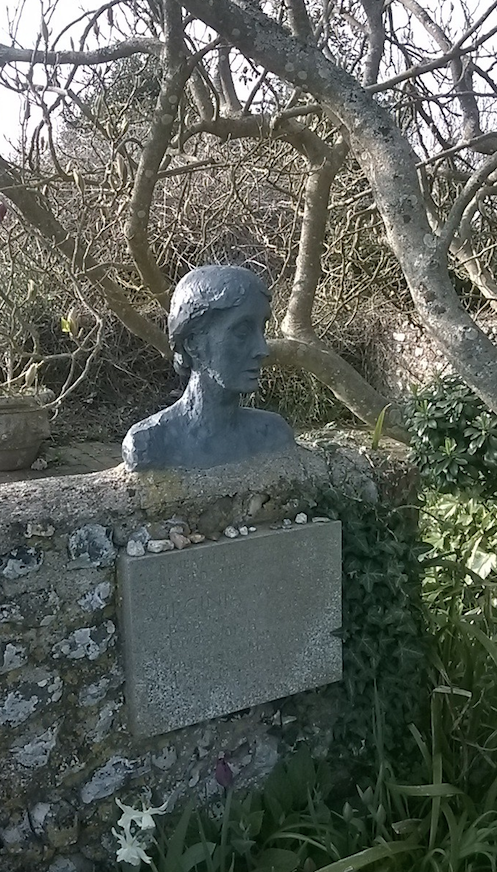 other’. Even if it is a thing so small that the most it might earn is a raised eyebrow or a stern reprimand. Often, such things are easier to manage with an accomplice. My husband knows me well, and at that moment he fully understood my heart’s desire. When he opened that door, when he entered Virginia’s summer home, I was suddenly very truly present in my skin. No longer was I untethered. And I can say, with some infinitesimal measure of rebellion, that I followed.
other’. Even if it is a thing so small that the most it might earn is a raised eyebrow or a stern reprimand. Often, such things are easier to manage with an accomplice. My husband knows me well, and at that moment he fully understood my heart’s desire. When he opened that door, when he entered Virginia’s summer home, I was suddenly very truly present in my skin. No longer was I untethered. And I can say, with some infinitesimal measure of rebellion, that I followed.
We were met almost instantly by a young woman — a docent sent to Rodmell only recently. It was her third day. She was very happy to show us the living areas downstairs. We stepped in Virginia’s footsteps. We touched the chair she had once sat in. We trailed fingers over the small table that her sister, Vanessa, had decoratively painted. Or maybe, only I did this, and my husband watched. Our guide pointed out the fireplace in the small living room, the letters open upon the desk, the chairs in the dining room, and the painting of Virginia (also by Vanessa) on the wall above the vase of fresh daffodils. She left us alone to breathe the rarefied air.
We did not overstay our welcome. But when we left the little house, I was able to enjoy the gardens as I would not have been able if my small wish had remained thwarted. I was able, then, to look upon the separate structure that contained Virginia Woolf’s actual writing desk and chair and typewriter and glasses with a contentedness I might not have otherwise been able to enjoy. All thanks to an act of surrogate bravery on my husband’s part. A small act to some, perhaps; but most definitely an act of love.